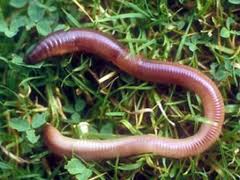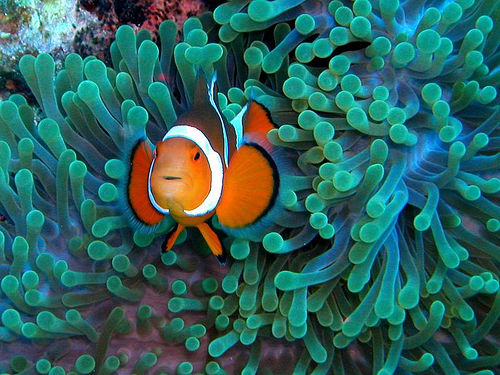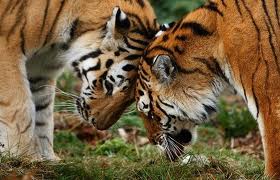Taxonomic Classification
What is Taxonomy?
Taxonomy is the study of the principle of organising into hierarchies which can be related to their supposed evolutionary decent.
Related species are clustered together into Genus, Genus into Families, Families into Orders, Orders into Classes, Classes into Phyla and Phyla into Kingdoms.
There are FIVE recognised kingdoms:
1. Prokaryotae
Bacteria and blue green bacteria (algae).
Bacteria do and will live in most environments in vast numbers - 1 gram of soil can contain 100 million bacteria.
2. Protoctista
These are eukaryotic (with a clear nucleus) often unicellular.
Including algae and protozoa.
Protozoan- the most primitive phylum of animal, mostly microscopic. Most live in freshwater and prey on bacteria.
3. Fungi (Mycophyta)
These are eukaryotic and reproduce sexually by means of produce spores.
There are more than 40,000 different known species of fungi that occupy a range of habitats and exploite a huge variety of food sources. They do not have Chlorophyll and are either saprophytic (lives on dead matter) or parasitic (lives in or on a living organism).
Many fungi are considered important economically.
4. Plantae
These are eukaryotic, multiceullular, photosynthetic with walls of cellulose and include-
- Bryophyta (Mosses and Liverworts)
This is a group of plants with a wide distribution, mostly within wet or damp terrestrial habitats. Some may be aquatic and many are epiphytic. All contain chlorophyll and in that sense can photosynthesise.
- Filicinophyta (Pteridophyta)
This group includes ferns, horsetails and clubmosses.
Ferns are themost important sub-division, most are terrestrial with some aquatic most of the different species live in tropical regions with common ferns also in temperate regions.
Horsetails are terrestrial. there is only one living genus Equisetales and is most commonly found in temperate zones.
- Spermataphyta
These are normal seed plants. Division of the plant kingdom providing the dominant flora of the present day. With a well defined plant body of root, stem and leaf.
- Gymnospermae
These are mainly trees and shrubs and are all terrestrial. Their seeds are produced in cones. There are 5 main orders:
1. Cycadales
2. Coniferales- Widespread and economically important
3. Taxales
4. Ginkgoales
5. Gnetales
- Angiospermae
These dominate the world's vegetation in most parts of the world and show great diversity. The most characteristic feature is the flower, they are usually hermaphrodites, after fertilisation a fruit is formed with one or more seeds. Angiosperms are of huge importance to humans.
There are two sub-classes, monocotyledons and dicotyledons.
Monocotyledons are herbaceous, none are true trees but some are palm-like in appearance.
Dicotyledons are herbaceous shrugs and trees.
5. Animalia
Animals are multicellular, eukaryotic, heterotrophic organisms that show both chemical and nervous co-ordination. Animal growth occurs all over the body surface. Being able to respond to their environment allows an animal to move from one place to another during its life cycle.
There are many phyla in this kingdom including-
- Phylum Cnidaria
Also called coelenterata, animals with only two cell layers enclosing a simple gut, all show simple radial symmetry and include jellyfish and coral.
- Phylum Platyhelminthes
These are flat unsegmented animals with bilateral symmetry and are usually hermaphrodite. The three main groups include the free- living planarian worms and two types of internal parasite, the tapeworms and flukes.
- Phylum Nematoda
Are round unsegmented worms which can be free-living or parasitic, many live in soil. They usually consist of a basic digestive system, a mouth and anus. An example of this would be Hookworm.
- Phylum Annelida
Clearly segmented worms including the earthworm, ragworm and leech. These are usually important for recycling nutrients within the soil.
- Phylum Mollusca
These creatures are usually unsegmented and consist of a head, foot and a calcareous shell. Included in this phylum are snails, slugs, octopus and squid.
- Phylum Arthropoda
The most diverse and successful group. All arthropods share a common body plan. A segmented body, hard exoskeleton and pairs of jointed limbs.
This group includes-
Crustaceans- All are aquatic or live in damp places. Species include crabs, lobsters and crayfish.
Arachnids- With four pairs of legs, including spiders, mites and scorpions.
Insects- Terrestrial when adults with three sections to their bodies and three pairs of legs.
Chilopoda- These are centipedes. They have distinct heads with poisonous jaws as well as one pair of legs on each body segment.
Diplopoda- Millipedes are herbivores and do not have distinct heads, they have two pairs of legs per segment.
- Phylum Echinodermata
This phylum includes Starfish and Sea Urchins, they are marine and have radial symmetry.
- Phylum Chordata
This is a very diverse phyla which develop in a related pattern and possess a hollow nerve cord. Some are invertebrates but most are vertebrates and all have a notochord or stiffening rod.
There are FIVE main groups:
Fish- This group includes Osteichthyes (bony fish), Chondrichthyes (cartilaginous fish) and Agnatha (jawless fish).
Amphibia- These have a soft, permeable skin that is used for gas exchange. They need moist habitats to survive and reproduce.
Reptilia- They are terrestrial but can use the water to hunt. Their scaly skin is resistant to water loss and they produce eggs with shells.
Aves- These have feathers, wings, beaks and scaly feet and legs. They are endothermic and produce eggs with shells.
Mammalia- Are endothermic and have either hair or fur, they are viviparous (Embryos) and produce milk for their young through mammary glands.
Mammals are known to protect their young in three different ways.
1. Monotremes- These are egg laying mammals like the duck billed platypus and spiny anteater
2. Marsupials- Give birth to neonates who finish their growth in the mother's pouch like the kangaroo.
3. Placental mammals- Nourish their young through a placenta like felines and canines.



